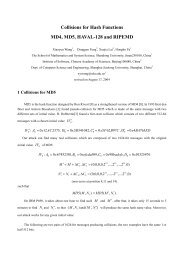sonet 101
sonet 101
sonet 101
Create successful ePaper yourself
Turn your PDF publications into a flip-book with our unique Google optimized e-Paper software.
What are the Benefits of SONET?<br />
NEW SERVICES THAT USE ATM<br />
One of the important benefits of SONET is its ability to position the network for<br />
carrying new revenue-generating services. With its modular, service-independent<br />
architecture, SONET provides vast capabilities in terms of services flexibility.<br />
High-speed packet-switched services, LAN transport, and high-definition television<br />
(HDTV) are examples of new SONET-supported services.<br />
Many of these broadband services may use asynchronous transfer mode (ATM)—<br />
a fast-packet-switching technique using short, fixed-length packets called cells.<br />
Asynchronous transfer mode multiplexes the payload into cells that may be generated<br />
and routed as necessary. Because of the bandwidth capacity it offers,<br />
SONET is a logical carrier for ATM.<br />
34<br />
In principle, ATM is quite similar to other packet-switching techniques; however,<br />
the detail of ATM operation is somewhat different. Each ATM cell is made up of<br />
53 octets, or bytes. Of these, 48 octets make up the user-information field and<br />
five octets make up the header. The cell header identifies the “virtual path” to be<br />
used in routing a cell through the network. The virtual path defines the connections<br />
through which the cell is routed to reach its destination.<br />
An ATM-based network is bandwidth-transparent, which allows handling of a<br />
dynamically variable mixture of services at different bandwidths (see Figure 3-6).<br />
ATM also easily accommodates traffic of variable speeds. An example of a service<br />
that identifies the benefits of a variable-rate interface is that of a video codecbased<br />
service. The video signals can be coded into digital signals and packetized<br />
within ATM cells.<br />
During periods of high activity within the video camera’s field of view, the rate of<br />
packet transfer will increase. Hence, an average rate of transfer may take place<br />
below the maximum capacity of the physical layer. But during peaks in activity,<br />
the rate of packetization goes above the normal maximum.






